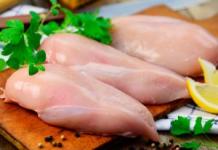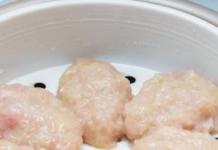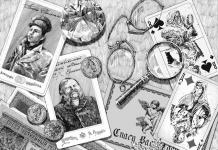Indoor plants are pets that delight our eyes with bright greenery and beautiful bright flowers all year round. But in order for them to grow and develop well, some care is required. In particular, you need to know about each plant variety the features of its watering, lighting, transplantation and fertilization. But even these characteristics can differ at different times of the year. For example, summer and winter watering should always be different. The same can be said about feeding flowers with fertilizers.
The need for winter feeding depends on the type of houseplant and on the conditions that surround it. So, most succulents in the winter have a pronounced dormant period, and watering, and even more so feeding them is not required. Other plants, such as anthurium, spathiphyllum, violet or Decembrist, which delight us with beautiful flowering even in winter, are recommended to be regularly fed.
Also, whether flowers need to be fertilized in winter depends on the humidity and temperature of the room. So, during the period when the daylight hours are the shortest, and the air in the apartment is dry due to heating, you can feed less often. If the flower “loves” artificial lighting and irrigation, then fertilizers should be applied according to the previous scheme.
How to feed home flowers in winter?
So, you have decided on the need for feeding and you have a new problem - how to feed indoor flowers in winter? To introduce nutrients or water the substrate for each plant, only special fertilizers intended for it should be used. For example, violets need nitrogen, potassium and phosphorus, while spathiphyllum needs both minerals and organics for good flowering.
At the same time, there are also universal fertilizers (for example, for decorative foliage plants). 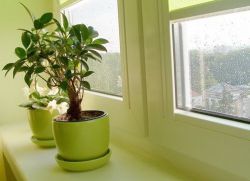 This is handy if you have a variety of indoor flowers. different varieties, but the best effect with this approach is unlikely to be achieved.
This is handy if you have a variety of indoor flowers. different varieties, but the best effect with this approach is unlikely to be achieved.
In addition to purchased fertilizers, houseplants can also be fed with homemade nutritional cocktails. Many amateurs successfully use sleeping coffee and tea, ash, yeast, glucose and even ordinary sugar for feeding. These seemingly simple products able to work a real miracle, awaken a wilted plant and make it bloom.
Thus, there are no definite answers to the questions of what and how to feed indoor flowers in winter, and you will understand this from your own experience.
TOP-8 SUPER SNACKS IN THE FORM OF BALLS ✌ TO NEW YEAR'S TABLE 2018 1. Original salad in balls Ingredients: ● A glass of boiled rice, ● Canned food. fish (I have pink salmon), ● Eggs var. 3 pcs. ● Mayonnaise-3 table. spoons. ● A bunch of dill, ● Raw carrots-1 pc, Preparation: Rice + fish + proteins + mayonnaise, salt, pepper. To mix everything. Grate the carrots on a fine grater. Grate the yolks too. Divide the salad into balls, roll in herbs, yolks and grated carrots. 2. Cottage cheese croquettes with vegetable salad Ingredients: For croquettes: ● 500 g of cottage cheese ● 1 small carrot ● 1/2 bunch of dill ● a handful of chopped walnuts ● 1 tbsp. l. vegetable oil ● 1 yolk ● 1 tsp. cumin ● a pinch of salt. For vegetable salad: ● 2 fresh cucumber● 100 g of radish ● 1/2 bunch of green onions ● 1/2 bunch of parsley lettuce. Preparation: Put cottage cheese in a bowl, mash with a fork. Add finely grated carrots, walnuts, chopped dill, vegetable oil, salt. Mix well. From the resulting mixture, mold croquettes in the form of balls with wet hands, put in the refrigerator for half an hour. Put lettuce leaves on the dish, put cucumber and radish slices on top of the lettuce leaves, sprinkle with chopped green onions and parsley. vegetable salad lay out the curd croquettes, sprinkle with grated yolk and caraway seeds. 3. Potato balls for side dishes Ingredients: ● 800 g potatoes ● 50 g butter ● 1 a raw egg for mashed potatoes ● red and black ground pepper, salt to taste ● 40 g wheat flour ● vegetable oil for deep-frying Preparation: Wash, peel, boil the potatoes until they are half done and drain. Without letting cool, quickly and thoroughly rub with a wooden pestle. Add pre-melted hot butter , raw egg, salt and pepper to taste, rub well again and mix. Shape the warm mashed potatoes into small balls. Dip them in premium flour. Heat the vegetable oil to a boil in a large skillet with high sides or in a saucepan and fry the potato balls in it until golden brown. Serve hot, garnished with fresh herbs. 4 . Elegant cheese balls for the festive table Ingredients: ● Cheese ● Garlic ● Mayonnaise ● Olives ● Almonds ● Dill Preparation: 1. Grate cheese (any) and add very finely chopped garlic. 2. Then add a little mayonnaise to the mixture until a plastic mass is obtained, knead and mix well. 3. Place almonds in the middle of each olives. 4. Roll the curd into balls by placing the stuffed olive inside each ball. 5. Wash the dill, dry it very well and chop finely. The drier the dill is and the finer it is cut, the more convenient it is to bread the balls. 5. Snack - Balls with Cheese and Tomatoes Ingredients: ● Cheese cheese - 200 g, ● cherry tomatoes - 150 g, ● garlic 2 cloves (pressed through a press), ● ground pepper - to taste, ● soft cheese - 2 tbsp. l, ● butter - 1 tablespoon, ● a fresh bunch of dill / parsley, ● toasted sesame seeds - as needed. Preparation: Chop the cheese, mash with a fork, add cheese or softened butter, garlic, black pepper. Stir until smooth and form into balls. Prepared tomatoes must be placed inside the mass, gently roll into balls and roll in finely chopped parsley or dill. It is better to take dill (I know from practice), and then in sesame. Refrigerate for 30-40 minutes. The appetizer is ready 6. CHARCOAL SNACK Ingredients: ● 2 processed cheese; ● 2 tbsp. tablespoons of mayonnaise; ● 2-3 cloves of garlic; ● 2-3 pinches of salt; ● 1 pack of ground paprika, turmeric and dried herbs Preparation: You can find processed cheese curds in any supermarket or store, since they cost a penny and are always available. To prepare a snack, they must be grated on a coarse grater, but in order for the curds to keep their shape, place them in the freezer for a few minutes. In it, they will harden slightly and it will become much easier to rub them. Place the grated melted mass in a bowl with high sides. Peel the garlic cloves and rinse in water. Pass them through a press into a bowl of grated mass. Pour salt into it immediately and add mayonnaise. It is best to stir such a sticky mass with a fork - it will break all the lumps and properly mix the garlic pomace among the curd mass. Then pour the seasonings into three separate containers - they are red, yellow and green - a real traffic light! Dip your palms in water and separate small pieces from the melted mass, roll them into small balls. Dip the balls into the prepared seasonings and roll them in. Prepare the dish in advance with green salad leaves and dill sprigs laid out on it. Arrange the garlic balls on a platter in any order you like. By the way, some culinary specialists even place walnuts or peanuts in the middle of such balls, taking as an example "Rafaello" candy with almonds inside. Here's your holiday snack and you're done. 7. CHEESE SNACK Ingredients: ● 150 g of Adyghe cheese (I have it with herbs); ● 150 g of processed cheese (which is rubbed); ● 3-4 cloves of garlic; ● some greenery; ● salt and pepper - to taste; ● mayonnaise for dressing; ● sesame seeds for rolling Preparation: Grate the melted cheese on a coarse grater. I recommend freezing it a little to make it easier to grate. Grind the garlic and herbs. Put cheeses, herbs with garlic in a bowl, season with salt, pepper, season with mayonnaise. Stir. Roll wet hands small balls. Fry the sesame seeds in a dry frying pan until golden brown. Roll the balls in it. Put on a dish, garnish with herbs. I hope you will like it this recipe very tasty, interesting cheese snack with garlic. 8. HOLIDAY SNACK Ingredients: ● boiled beets - 2 pcs ● boiled eggs - 2-3 pcs ● hard cheese - 150 g ● garlic - 2 cloves ● boiled or raw carrots - 1 pc ● salt, pepper - to taste ● slightly salted herring ( fillet) - 1/2 pcs ● mayonnaise - to taste ● lettuce, parsley - for decoration ● walnuts - 2-3 pcs Preparation: Peel and grate beets on a medium grater. Separate the yolks from the whites of the eggs. Mash the yolks and add to the beets along with grated (you can also melt) cheese (half). Season with salt and pepper to taste, add a couple of tablespoons of mayonnaise, mix. Grate the carrots on a medium grater, add the grated remaining cheese, grated proteins and garlic passed through a press. Season with mayonnaise, stir. Form balls from the beetroot mass, put a piece of herring fillet in the middle of each. Also form balls from the carrot mass, putting several walnut kernels in the middle. Put the balls on a lettuce leaf, garnish with parsley.
Those who have a small green island on their windowsill have already learned how to take care of their pets and have studied their characteristics and preferences for the composition of the land, irrigation regime and fertilizers. However, in winter period indoor flowers need special care. Not all greenery lovers know about this, that with a lack of nutrients, plants slow down their growth, start to hurt, stop blooming.
What should be the feeding of indoor flowers, and what are its general rules?
And so, how to feed indoor flowers in winter at home? You need to know that there are not so many such rules, but they should be adhered to. First, top dressing should not be used if the soil is dry. And even when they are highly diluted, there is still a risk of burning the roots. Therefore, before fertilizing the ground, the plants are watered a little and left to soak in moisture for 2-3 hours. And only then fertilize with the prepared solution.
It is better to feed flowers in the evening, when there is no sun exposure. There is less evaporation and the flower is fully nourished.
Each package contains instructions. There is no need to violate these recommendations. Ultimately, the plants will not be able to absorb a large dose of fertilizing, but there is a possibility of burning the roots with them.
There are times when feeding cannot be done. This happens during a period when flowers are sick or pests are exposed to them. At such a time, it is necessary to solve the existing problem, and only then, when the flower is fully recovered, they carefully begin to make the necessary compositions to support the pet.
It makes no sense to start fertilizing purchased plants right away. When breeding from industrial conditions, many minerals and stimulants are placed in the soil and the flower needs time to master these dressings. After purchase, the plants should be fed no earlier than a month later. During this time, they will be able to settle down in a new place in your home.
After the transplant, you should also pause. If the soil you selected was the right one, then the plants will be comfortable in it, and they will receive all the necessary substances for survival. Plus, no matter how carefully you move the plant, you will touch its roots. Therefore, the fertilizers applied will only harm the flower.
There are also certain rules for feeding indoor plants in the winter.
During this time, green pets are especially vulnerable. When is it needed immediately? Those who forget to periodically feed the soil for home plantings should know that gradually the plants stop growing, the stems are strongly stretched, while becoming thin and brittle. Leaves lose color, become pale. Flowering plants refuse to bloom. In unfertilized soil, plantings often begin to hurt. Noticing the presence of such symptoms, you must immediately begin to apply fertilizers. However, this should be done as gently as possible.
If signs of weakness appear during the winter period, you need to think carefully before feeding your indoor plants so that they can absorb the nutrients of the fertilizers.
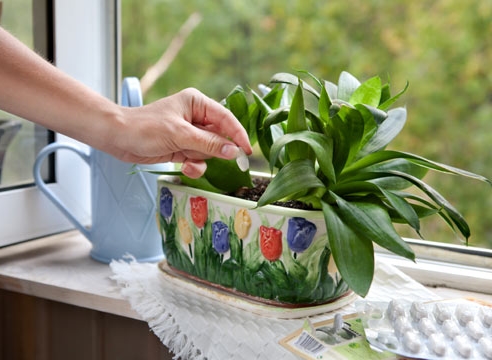 In the spring and summer, they usually use universal dressings intended for the usual regime. As for winter, many growers are of the opinion - do not fertilize plants during the cold season. However, professionals think quite differently. Of course, at this time, fertilizers should be applied in different proportions and with a change in dressing. No need to add growth stimulants. But, nevertheless, feeding should be continued. Especially it concerns flowering plants, since during flowering they lose their strength and need nutrients... Such specimens should be fed normally until they stop flowering.
In the spring and summer, they usually use universal dressings intended for the usual regime. As for winter, many growers are of the opinion - do not fertilize plants during the cold season. However, professionals think quite differently. Of course, at this time, fertilizers should be applied in different proportions and with a change in dressing. No need to add growth stimulants. But, nevertheless, feeding should be continued. Especially it concerns flowering plants, since during flowering they lose their strength and need nutrients... Such specimens should be fed normally until they stop flowering.
Plants that do not bloom need to be fertilized in a smaller proportion and much less frequently. Until spring, it will be enough to feed them once a month.
Also, feeding flowers in winter depends on the variety of plants. For example, a lily is resting at this time. If its age exceeds one year, then its upper part dries up, and the root gains strength. Therefore, until spring, the pot is placed in a cool place where the moisture of the earth will be preserved. If you purchased the onion in the fall, it should take root in a new place. This means that until the beginning of spring, it should not be touched. These rules apply to all flowers that are endowed with a temporary rest period.
What is the best way to feed indoor plants in winter?
Over the years of growing indoor flowers, flower growers have come up with different ways to support plants in the winter, when care should be nutritious, but at the same time, as gentle as possible. The following dressings are considered the most popular and more successful:
* A teaspoon of aloe juice is diluted with 1.5 liters of water and watered with existing indoor flowers as a top dressing, once a month.
* Infusion of citrus and pomegranate peels and stand for 24 hours. This dressing is also suitable for all plants.
* Banana skins are infused for the same time.
* When washing cereals: rice, buckwheat, millet, pearl barley, no need to pour out the water. It will serve as a good soft fertilizer. This also applies to water, in which dried peas were kept for soaking for some time.
* In a home with an aquarium, when the water changes, the used water should not be thrown away. It is useful for watering indoor plantings. 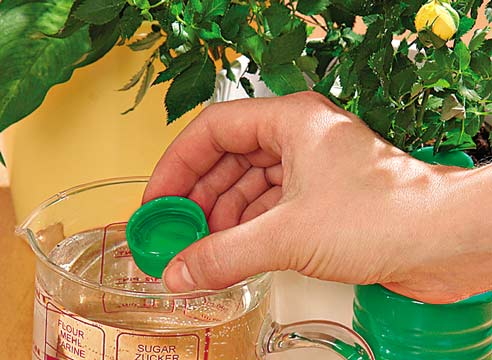
Watering flowers in this way does not require chemical fertilizers.
In order not to puzzle over the question in winter: - "How to feed indoor plants?", You can already prepare for the winter season in spring. When making a transplant in the spring, you can apply methods that will save you from the autumn need to transplant plants.
You need to stock up on forest soil. Moreover, you need the top layer taken under the oak trees. It contains enough necessary nutrients for whole year... For plants that need acidic soil, a chopped fern is placed on the bottom of the pot when transplanting.
When feeding indoor flowers in winter, you need to know what acidity each plant needs. It makes no sense to pour egg shells into the soil for those plantations that do not need an acidic environment.




























